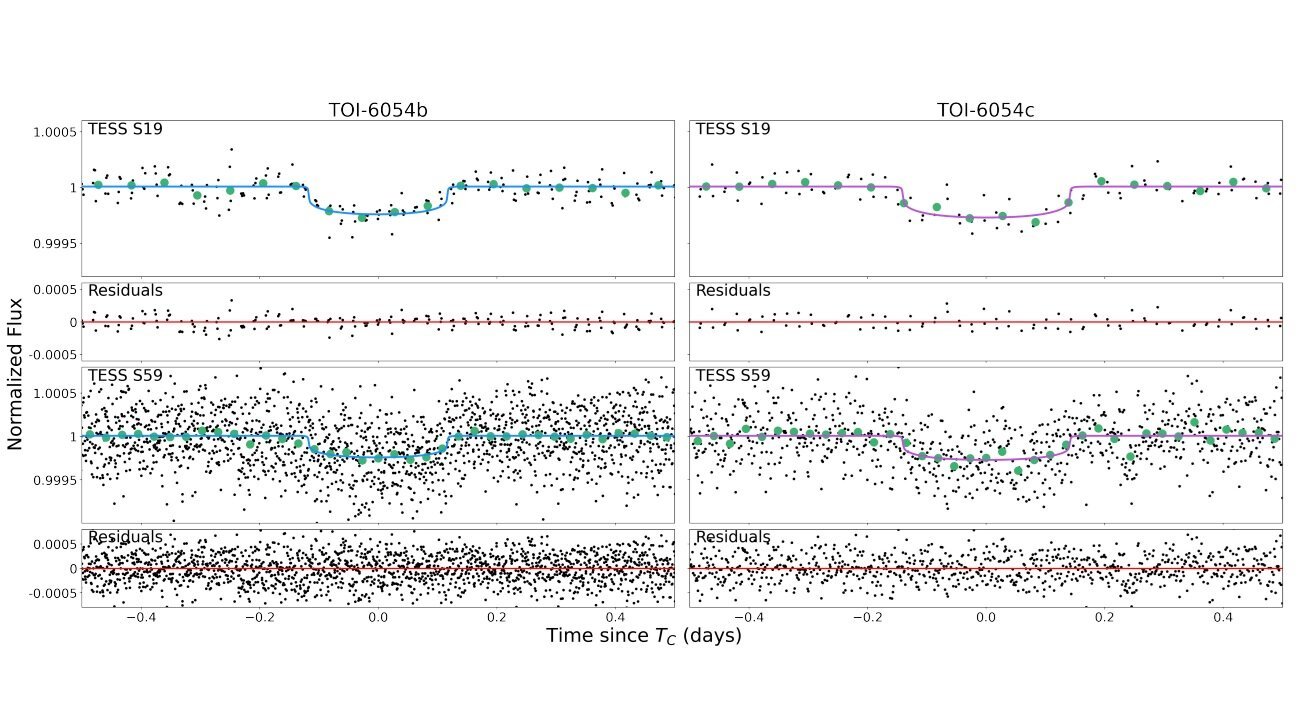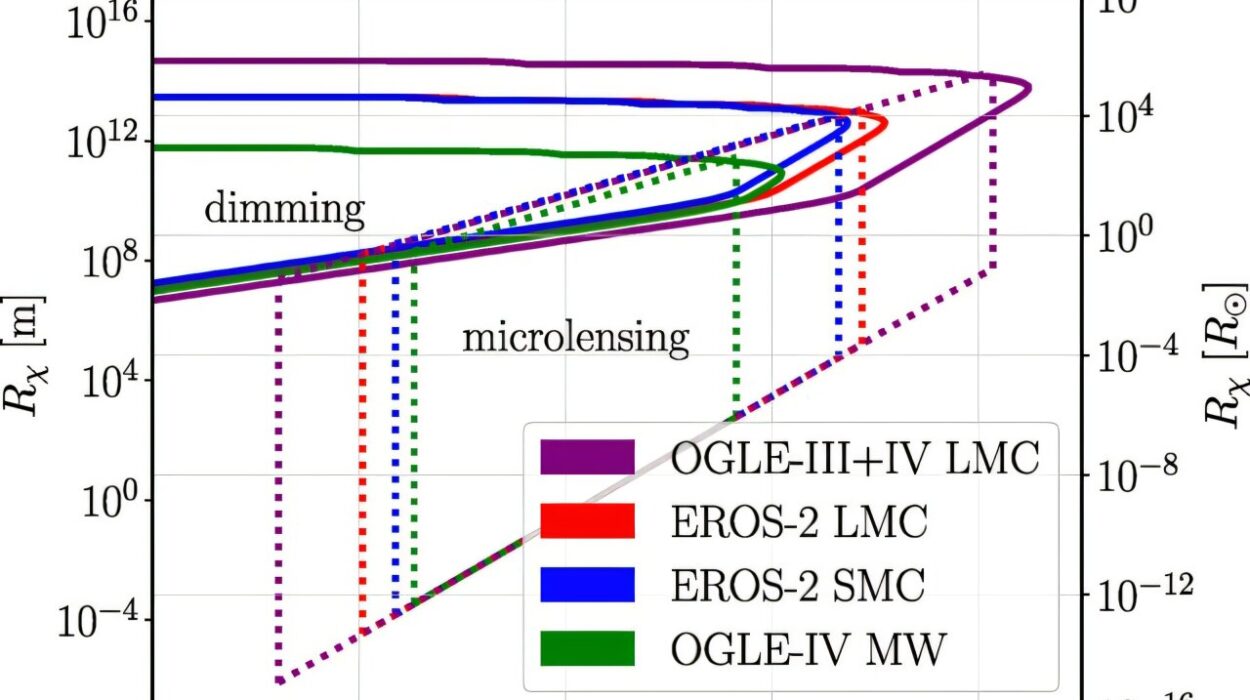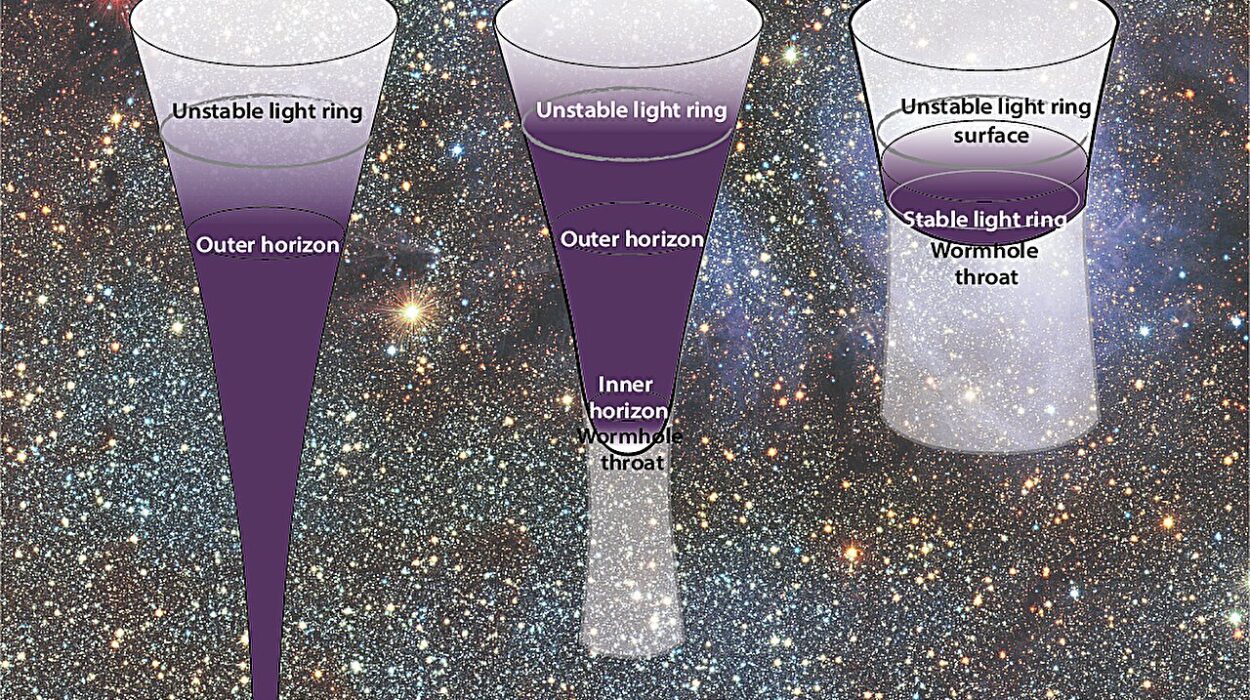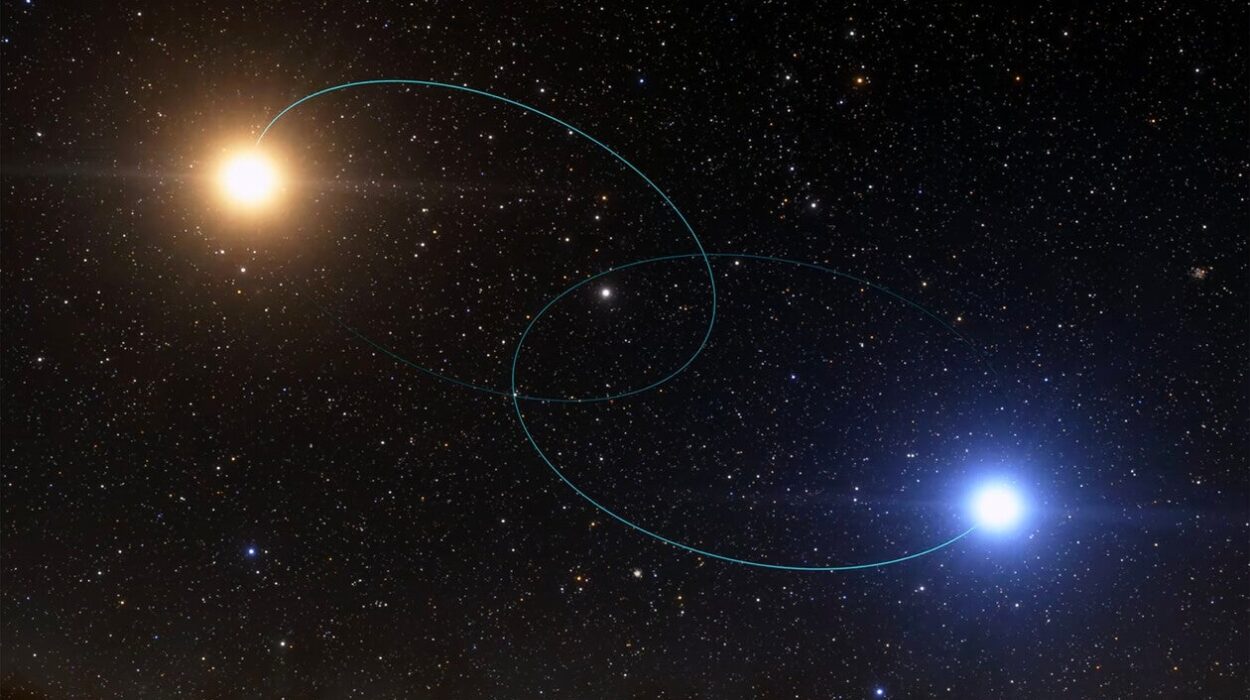In a significant discovery made by NASA’s Transiting Exoplanet Survey Satellite (TESS), an international team of astronomers has identified two sub-Neptune exoplanets orbiting a subgiant star known as TOI-6054. These two newfound alien worlds are approximately three times larger than Earth, adding to the growing catalog of exoplanetary systems that are being uncovered in our galaxy. The discovery was published on January 15, in a paper on the pre-print server arXiv.
TESS and Its Mission to Uncover Exoplanets
Since its launch in April 2018, TESS has been conducting an extensive survey of the cosmos, focusing on stars near our Sun. Its primary mission is to search for transiting exoplanets by monitoring the brightness of over 200,000 stars. This data helps astronomers spot the subtle dimming that occurs when an exoplanet passes in front of its host star. To date, TESS has identified more than 7,300 candidate exoplanets, or TESS Objects of Interest (TOIs), with 595 confirmed. The satellites focus spans a range of exoplanet types, from small, rocky worlds to larger, gaseous giants. The discovery of two new exoplanets around TOI-6054 adds to the growing list of confirmed finds.
TOI-6054: The Star at the Heart of the Discovery
The star at the center of this discovery, TOI-6054, also cataloged as TIC 392681545, is located approximately 259 light years from Earth in the constellation Lyra. This F-type subgiant star is about 66% larger and slightly more massive than our Sun. The classification of TOI-6054 as a subgiant means that it is in a later stage of stellar evolution, having exhausted much of the hydrogen in its core. Stars like TOI-6054 are typically cooler than the Sun but are much brighter and larger.
Astronomers observed two transit signals from the star, which indicated the presence of two exoplanets. The signals were detected in the star’s light curve by TESS, which measures periodic dips in the light intensity caused by planets transiting in front of their parent stars. To confirm the planetary nature of these signals, the team, led by Maxwell A. Kroft from the University of Wisconsin–Madison, turned to the NEID spectrograph at the WIYN 3.5-meter telescope on Kitt Peak, Arizona. This spectrograph measures the subtle gravitational tugs that planets exert on their host stars, providing precise mass and orbital data that confirm the existence of the exoplanets.
Characterization of the Two Sub-Neptune Exoplanets
The two newly discovered exoplanets orbiting TOI-6054 have been designated TOI-6054 b and TOI-6054 c. These exoplanets are both classified as sub-Neptunes, which refers to their size—being smaller than Neptune but much larger than Earth. The size and mass of these planets suggest that they are likely not made of solid rock alone but instead may have significant gaseous envelopes.
TOI-6054 b
- Radius: Approximately 2.65 Earth radii
- Mass: About 12.4 Earth masses
- Density: 3.65 g/cm³
- Orbital Period: 7.5 days
- Orbital Distance: 0.077 AU from the host star
- Equilibrium Temperature: 1,360 K
TOI-6054 b is the closer of the two planets, orbiting the star every 7.5 days at a distance of just 0.077 AU. The exoplanet’s mass and radius suggest that it is much too large to be a purely rocky world. Its density of 3.65 g/cm³ indicates that it likely contains significant amounts of lighter elements, such as water or gas, contributing to its relatively low density compared to Earth.
TOI-6054 c
- Radius: Around 2.81 Earth radii
- Mass: 9.2 Earth masses
- Density: 2.27 g/cm³
- Orbital Period: 12.56 days
- Orbital Distance: 0.11 AU from the host star
- Equilibrium Temperature: 1,144 K
The second planet, TOI-6054 c, is slightly larger, with a radius of about 2.81 Earth radii and a mass of 9.2 Earth masses. Its density of 2.27 g/cm³ is even lower than that of TOI-6054 b, suggesting it might have an even greater proportion of lighter materials such as hydrogen, helium, or water. It orbits the star every 12.56 days, at a slightly greater distance of 0.11 AU.
Understanding the Composition of the Sub-Neptunes
The exoplanets TOI-6054 b and TOI-6054 c fall into the category of sub-Neptunes, a class of planets that are often found in multi-planet systems around stars. These planets are characterized by their size, which is intermediate between the size of Earth and Neptune. Their large size suggests that they likely have significant gaseous envelopes, which may be composed of hydrogen and helium, or possibly water.
Given that these exoplanets are much too large to have a purely rocky composition, astronomers suggest that they are probably intermediate between hydrogen/helium-enveloped rocky worlds and hydrogen/helium-free water worlds. In other words, their atmospheres might consist of a combination of volatile compounds, including water, hydrogen, and possibly other gases like carbon dioxide or methane.
Potential for Atmospheric Studies with the James Webb Space Telescope
The TOI-6054 system presents an exciting opportunity for follow-up observations, particularly in the area of atmospheric characterization. With the launch of the James Webb Space Telescope (JWST), astronomers now have the ability to study exoplanet atmospheres in much greater detail than ever before.
The transmission spectroscopy technique allows scientists to analyze the light passing through an exoplanet’s atmosphere during a transit. This can reveal information about the planet’s atmospheric composition, including the presence of gases like water vapor, methane, and carbon dioxide, or even possible signs of habitability. Based on the size and orbital characteristics of both TOI-6054 b and TOI-6054 c, the scientists involved in the discovery believe that both planets could exhibit detectable atmospheric features in transmission spectroscopy observations. These observations could help uncover key details about the planets’ atmospheres, including their chemical makeup, cloud cover, and whether they show any signs of potential habitability.
Conclusion
The discovery of the two sub-Neptune exoplanets orbiting the F-type subgiant star TOI-6054 marks a significant step forward in exoplanet research. Identified by NASA’s TESS mission and confirmed through follow-up observations with the NEID spectrograph, these planets provide valuable insights into the diversity of exoplanetary systems. Their size, mass, and distance from their host star suggest they are intermediate between rocky and gaseous worlds, likely composed of a combination of volatile materials. The system offers a promising target for future atmospheric studies, particularly with the upcoming James Webb Space Telescope, which could provide detailed information about the planets’ atmospheres. As TESS continues to discover more exoplanets and advanced tools like JWST enable more in-depth analysis, the potential to uncover habitable environments or gain a better understanding of planetary evolution increases. This discovery underscores the vast potential for future research and exploration in the search for planets beyond our solar system.
Reference: Maxwell A. Kroft et al, A Pair of Dynamically Interacting Sub-Neptunes Around TOI-6054, arXiv (2025). DOI: 10.48550/arxiv.2501.09095






